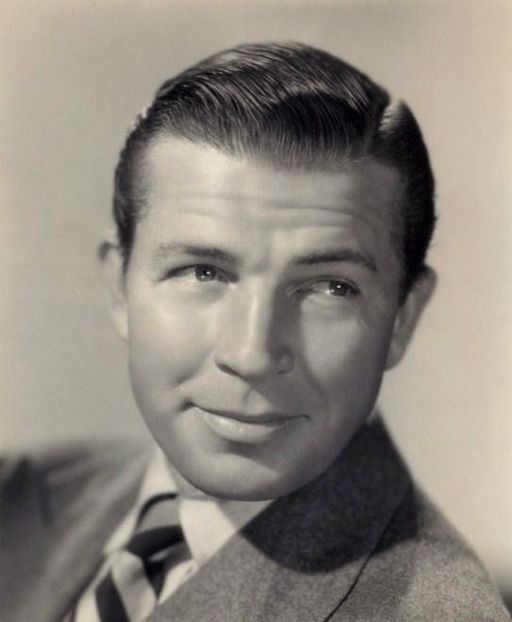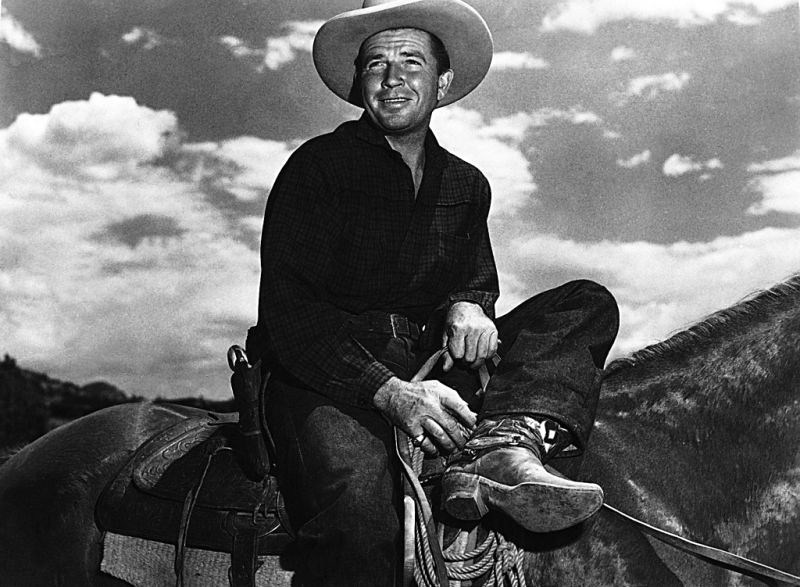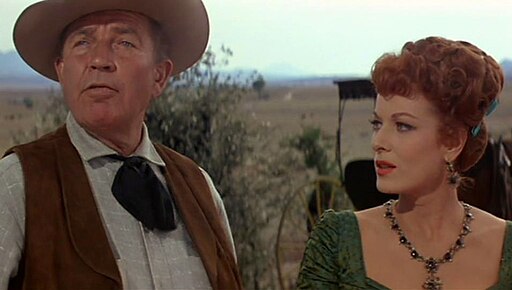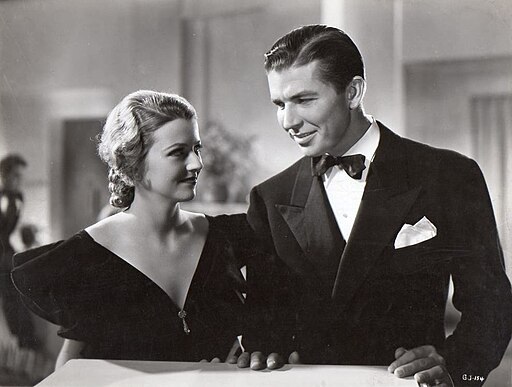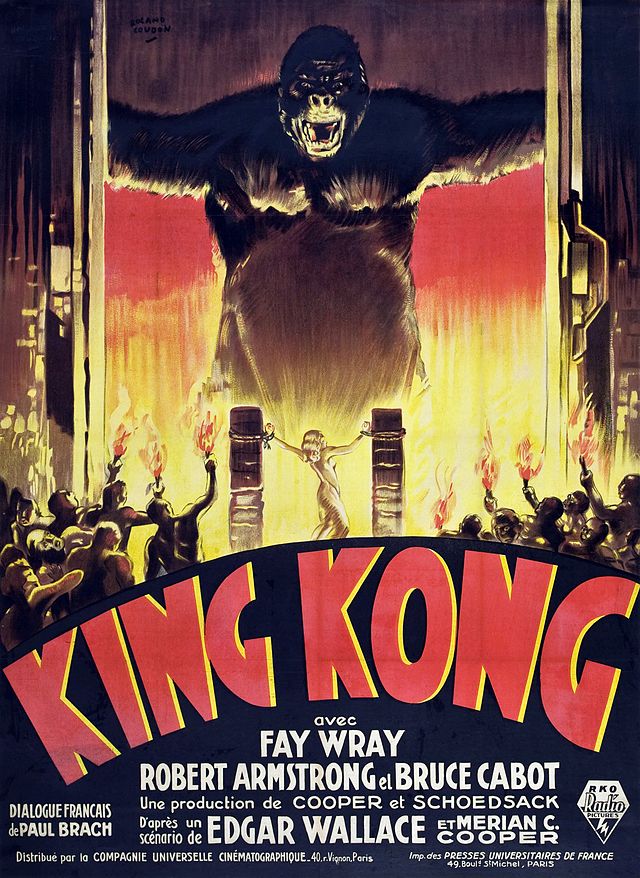Bruce Cabot
back| Full Name | Étienne Pelissier Jacques de Bujac |
| Stage Name | Bruce Cabot |
| Born | April 20, 1904 |
| Birthplace | Carlsbad, New Mexico, United States |
| Died | May 3, 1972 |
| Buried | Inglewood Park Cemetery, Inglewood, California, United States |
| Married to | Mary Mather Smith (1926 - 1930) - Adrienne Ames (1933 - 1935) - Francesca De Scaffa (1950; divorced) |
| Children | None |
| Notable films | King Kong (1933) - Last of the Mohicans (1936) - Angel and the Badman (1947) - Hatari (1962) |
Bruce Cabot
The Rugged Hero of Hollywood
Bruce Cabot was a prominent Hollywood actor known for his rugged looks and robust presence. He rose to fame with his role as Jack Driscoll in the 1933 classic "King Kong."
Despite this early success, Cabot was mostly cast in supporting roles, often playing tough or villainous characters. His filmography spanned various genres, including westerns, adventure films, and dramas. He appeared in several films with John Wayne, including "Angel and the Badman" (1947) and "The Green Berets" (1968), showcasing his versatility.
Related
Bruce Cabot
Biography and Analysis of his Career
Bruce Cabot's career in Hollywood spanned from the 1930s to the 1960s. Born Étienne Pelissier Jacques de Bujac in New Mexico, he moved to Hollywood and adopted the stage name Bruce Cabot. His big break came with the role of Jack Driscoll in the 1933 film "King Kong," which remains his most iconic performance.
Despite this early success, Cabot didn't become a top-tier star. He mainly played supporting roles, often as a tough guy or villain. His rugged looks and imposing presence made him a perfect fit for such characters. He worked in a variety of film genres, including westerns, adventure films, and dramas.
During World War II, Cabot served in the United States Army, interrupting his acting career. After the war, he returned to Hollywood but found that the landscape of the industry had changed. He struggled to regain his earlier momentum.
In the 1950s and 1960s, Cabot found a second wave of success in films starring John Wayne, a personal friend. He played significant roles in several Wayne films, which rekindled public interest in him.
Cabot's personal life was marked by his multiple marriages and high-profile social life. He was a well-known figure in Hollywood social circles and had many famous friends, including Errol Flynn and John Wayne.
Bruce Cabot's legacy in the film industry is defined by his role in "King Kong" and his collaborations with John Wayne. He passed away in 1972, leaving behind a filmography that, while not prolific, includes some memorable roles in classic Hollywood cinema.
Video about the relation between Bruce Cabot and Errol Flynn:
Analysis of Bruce Cabot’s Acting Style:
Bruce Cabot's acting style was characteristic of the Hollywood studio era, reflecting the trends and expectations of the period in which he worked. His performances can be analyzed based on various aspects of his style:
Physical Presence:
- Robust and Commanding: Cabot had a rugged, masculine appearance that often led to him being cast in tough, assertive roles. His physicality was a significant part of his on-screen presence, making him an ideal fit for adventurous or villainous characters.
- Facial Expressions: He utilized his strong facial features effectively, conveying emotions ranging from stern determination to subtle menace, depending on the role.
Voice and Diction:
- Deep, Resonant Voice: Cabot's voice was deep and resonant, which added to his authoritative screen presence. This vocal quality was particularly effective in roles that required a commanding or intimidating character.
- Clear Diction: His enunciation was clear, a trait that was highly valued in the early sound era of cinema.
Character Portrayal:
- Typecasting as the "Tough Guy": Cabot often played tough, rugged characters, such as villains, military men, or adventurers. This typecasting was typical of the studio system, which often assigned actors to specific "niches" based on their looks and perceived strengths.
- Subtlety in Performance: While his roles were often physically imposing or straightforwardly villainous, Cabot could bring a level of subtlety to his characters, giving them depth beyond the typical 'tough guy' archetype.
Adaptability:
- Versatility Across Genres: Cabot appeared in a wide range of genres, including adventure films, westerns, dramas, and film noirs. His ability to adapt to different genres speaks to his versatility as an actor.
- Evolution Over Time: His acting style evolved with the changing demands of the film industry, especially evident in his later collaborations with John Wayne, where he showed more relaxed and naturalistic performances compared to his earlier, more formal acting style.
Screen Chemistry:
- Interactions with Co-Stars: Cabot's performances were often enhanced by his interactions with other actors, particularly in films where he played opposite strong leading men like John Wayne.
Legacy and Influence:
- Iconic Roles: While not a leading star in the same vein as some of his contemporaries, Cabot's roles, particularly in "King Kong" and his films with John Wayne, left a lasting impression on audiences.
- Representation of the Era: His style is representative of the acting style of the 1930s to 1950s, providing a window into the performance norms and expectations of that period in Hollywood.
Cause of Death:
Bruce Cabot passed away on May 3, 1972, at the age of 68. His cause of death was lung cancer. This illness was unfortunately common among actors of his era, many of whom were smokers. Smoking was widespread and socially accepted during much of the 20th century, especially in the earlier decades, and its health risks were not as well-understood or publicized as they are today.
The Spouses of Bruce of Cabot:
Bruce Cabot had a colorful personal life, which included multiple marriages. Here's some information about his spouses and his marriages:
Mary Mather Smith:
- Bruce Cabot's first wife was Mary Mather Smith. They were married in 1926.
- The marriage was relatively brief and ended in divorce. Details about their relationship and marriage are not extensively documented in public records.
Adrienne Ames:
- Cabot was married to actress Adrienne Ames in 1933, shortly after his divorce from Mary Mather Smith. Ames was known for her roles in films during the 1930s.
- Their marriage was also short-lived, ending in divorce in 1937. Ames' career was in decline by the time of their marriage, and she passed away in 1947.
Francesca De Scaffa:
- Cabot's third wife was Italian actress Francesca De Scaffa. They married in 1950.
- This marriage, too, ended in divorce. De Scaffa was lesser-known in the film industry compared to Cabot's other wives.
Significance of his role in “King Kong”:
Bruce Cabot's role as Jack Driscoll in the 1933 film "King Kong" was a defining moment in his career and significantly impacted his trajectory as an actor. This role holds particular significance for several reasons:
- Breakthrough Role: "King Kong" was Cabot's breakthrough performance. It elevated him from a relatively unknown actor to a recognized face in Hollywood. Playing the male lead opposite Fay Wray in one of the most famous films of the early sound era gave him substantial exposure and recognition.
- Iconic Film: "King Kong" is considered a landmark in the history of cinema, particularly for its pioneering use of special effects, stop-motion animation, and its influence on the adventure and monster movie genres. Being part of such a groundbreaking and iconic film cemented Cabot's place in Hollywood history.
- Typecasting Influence: The role of Jack Driscoll, a brave and rugged adventurer, led to Cabot being typecast in similar roles throughout his career. His portrayal in "King Kong" established a screen persona that he would be associated with in many of his subsequent films, particularly in the adventure and western genres.
- Career Longevity: While Cabot never achieved top-tier star status, the success of "King Kong" helped in securing consistent work in Hollywood. He continued to play significant roles in various films, albeit mostly in supporting roles, and his association with "King Kong" remained a notable aspect of his legacy.
- Collaborations and Roles: The fame from "King Kong" allowed Cabot to work in a variety of films and genres. It also led to collaborations with other notable actors, including John Wayne, with whom he developed a notable partnership in later years.
Special Relation with John Wayne:
Bruce Cabot's relationship with John Wayne was one of both professional collaboration and personal friendship, significant in shaping Cabot's later career.
Professional Collaboration:
- Frequent Co-Stars: Cabot and Wayne appeared together in several films, notably in the 1950s and 1960s. This collaboration included movies like "Angel and the Badman" (1947), "The Comancheros" (1961), "Hatari!" (1962), "The War Wagon" (1967), "The Green Berets" (1968), and "Big Jake" (1971).
- On-Screen Chemistry: Their on-screen chemistry worked well, with Cabot often playing supporting roles. While Wayne was the charismatic lead, Cabot's strong presence and acting style complemented Wayne's performances.
- Diverse Roles: In these films, Cabot played a variety of characters, from villains to loyal sidekicks, showcasing his range as an actor and his ability to adapt to different genres and roles.
Personal Friendship:
- Off-Screen Bond: Beyond their professional work, Cabot and Wayne shared a strong off-screen friendship. This bond was evident in their ease of working together and in how frequently they collaborated.
- Hollywood Social Circles: They were part of the same Hollywood social circles and were known to socialize outside of work. This camaraderie likely contributed to their effective partnership in films.
Impact on Cabot's Career:
- Career Boost: Working with John Wayne, one of Hollywood's biggest stars, helped keep Cabot's career active, especially at a time when he might have otherwise been overshadowed by newer actors.
- Visibility and Legacy: Appearing in John Wayne films, many of which were successful and popular, enhanced Cabot's visibility and contributed to his lasting legacy in Hollywood.
Movies featuring Bruce Cabot:
1931
"Heroes of the Flames": A serial where Cabot played a heroic firefighter. It showcased early special effects in its dramatic fire sequences.
1932
"The Roadhouse Murder": A drama where Cabot plays a reporter investigating a murder to save an innocent man.
1933
"King Kong": Cabot's most famous role as Jack Driscoll in this groundbreaking adventure film about a giant ape brought to New York City.
"Midshipman Jack": A naval adventure featuring Cabot in a supporting role.
"Ann Carver's Profession": A drama about a woman's struggle in her career and marriage, with Cabot in a minor role.
1934
"Without Orders": A drama centered around pilots, with Cabot playing a supporting part.
"His Greatest Gamble": A film where Cabot plays a minor role in a story about a father's sacrifice for his daughter.
1935
"Society Doctor": A drama in which Cabot plays a secondary role in a story about medical professionals.
"Let 'em Have It": A crime film where Cabot plays a G-man tracking down gangsters.
"She": An adventure fantasy film based on H. Rider Haggard's novel, featuring Cabot in a supporting role.
1936
"The Last of the Mohicans": Cabot portrayed Magua in this adaptation of James Fenimore Cooper's novel.
“Fury”: Cabot plays Kirby Dawson in this film from Fritz Lang
1937
"Don't Gamble with Love": A drama where Cabot had a minor role.
"The Bad Man of Brimstone": A western where Cabot plays an outlaw.
1938
"Sinners in Paradise": A drama about a group of plane crash survivors, featuring Cabot in a key role.
1939
"Mystery Plane": A war film with Cabot in a prominent role.
"Disbarred": A crime drama featuring Cabot in a supporting role.
1940
"Captain Caution": A sea adventure set during the War of 1812, with Cabot in a leading role.
"Susan and God": A film featuring Cabot in a minor role, focused on a woman's religious awakening.
1941
"Go West, Young Lady": A western comedy in which Cabot played a supporting role.
1942
"Wild Bill Hickok Rides": A western film with Cabot portraying the villain.
1943
"The Fallen Sparrow": A war thriller where Cabot played a secondary character.
1944
"Salome Where She Danced": A drama featuring Cabot in a significant role.
1945
"Dakota": A western where Cabot played a villain opposite John Wayne.
1946
"Badman's Territory": A western with Cabot in a supporting role.
1947
"Angel and the Badman": A John Wayne western where Cabot played the antagonist.
1948
"Fury at Furnace Creek": A western in which Cabot played the role of Cash Blackwell.
1949
"The Big Steal": A film noir where Cabot played the role of Jim Fiske.
"Malaya": A war film featuring Cabot in a supporting role.
1950
"Rock Island Trail": A western in which Cabot had a minor role.
1951
"Best of the Badmen": A western with Cabot in a notable role.
"The Sea Hornet": A film where Cabot played a secondary role.
1952
"Kid Monk Baroni": Cabot had a supporting role in this film about a boxer.
1953
"Powder River": A western film featuring Cabot.
1955
"The Indian Fighter": A western where Cabot played a secondary role.
1956
"Mohawk": A western adventure film with Cabot in a supporting role.
1957
"Gunfight at the O.K. Corral": A famous western where Cabot played a supporting role.
1958
"The Quiet American": A film set in Vietnam, with Cabot in a minor role.
1959
"The Jayhawkers!": A western film featuring Cabot.
1960
"Fallguy": A crime drama with Cabot in a supporting role.
1961
"The Comancheros": A western featuring Cabot alongside John Wayne.
1962
"Hatari!": A Howard Hawks adventure film with John Wayne, featuring Cabot in a notable role.
1963
"McLintock!": Another John Wayne western with Cabot in a supporting role.
1964
"The Night of the Iguana": A drama film with Cabot in a minor role.
1965
"In Harm's Way": A war film where Cabot played a secondary role.
1966
"The Chase": A drama featuring Cabot in a minor role.
1967
"The War Wagon": A western starring John Wayne, with Cabot in a supporting role.
1968
"The Green Berets": A war film featuring John Wayne, with Cabot in a supporting role.
1971
"Big Jake": Another John Wayne western, with Cabot in a minor role.

